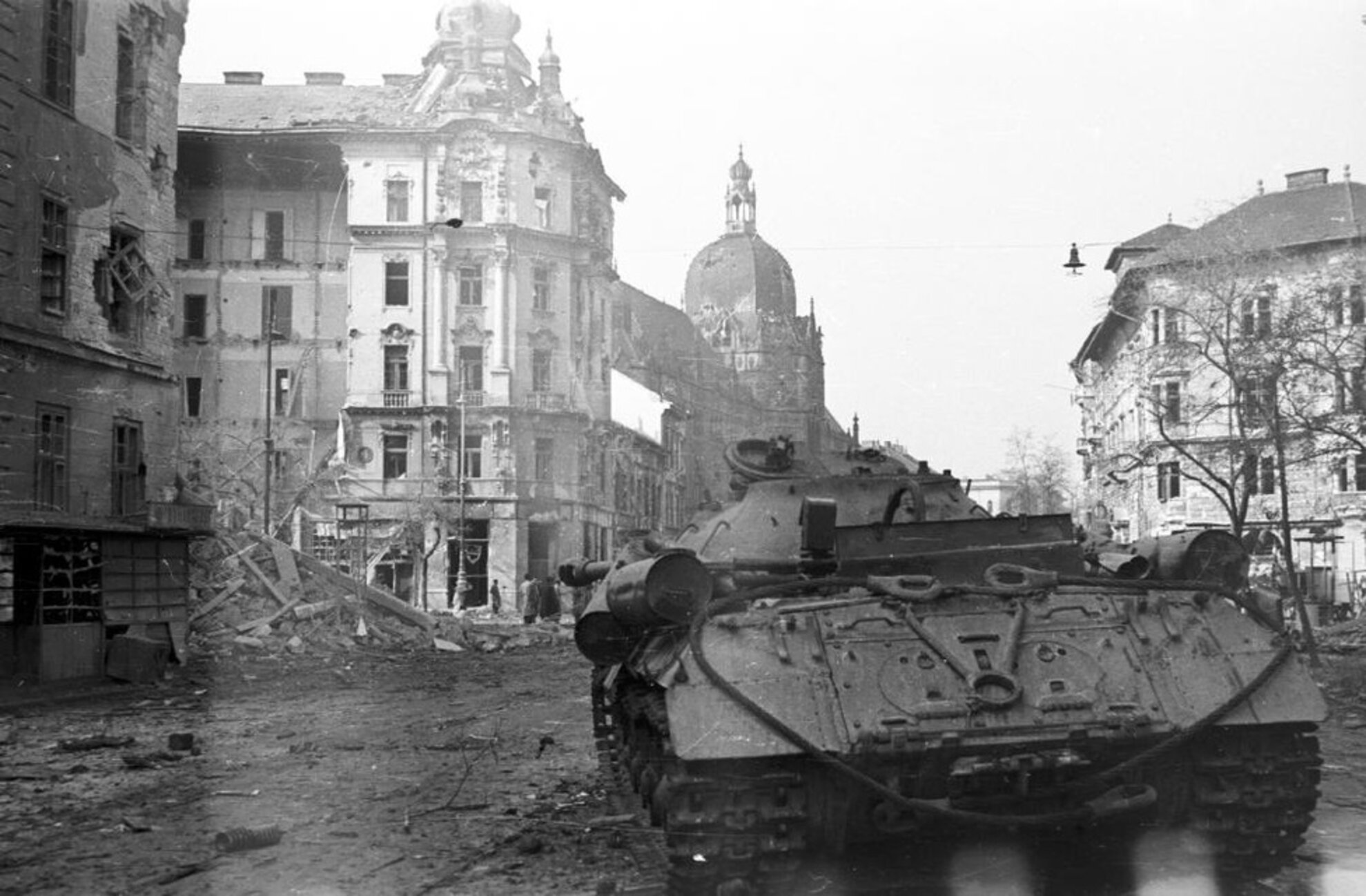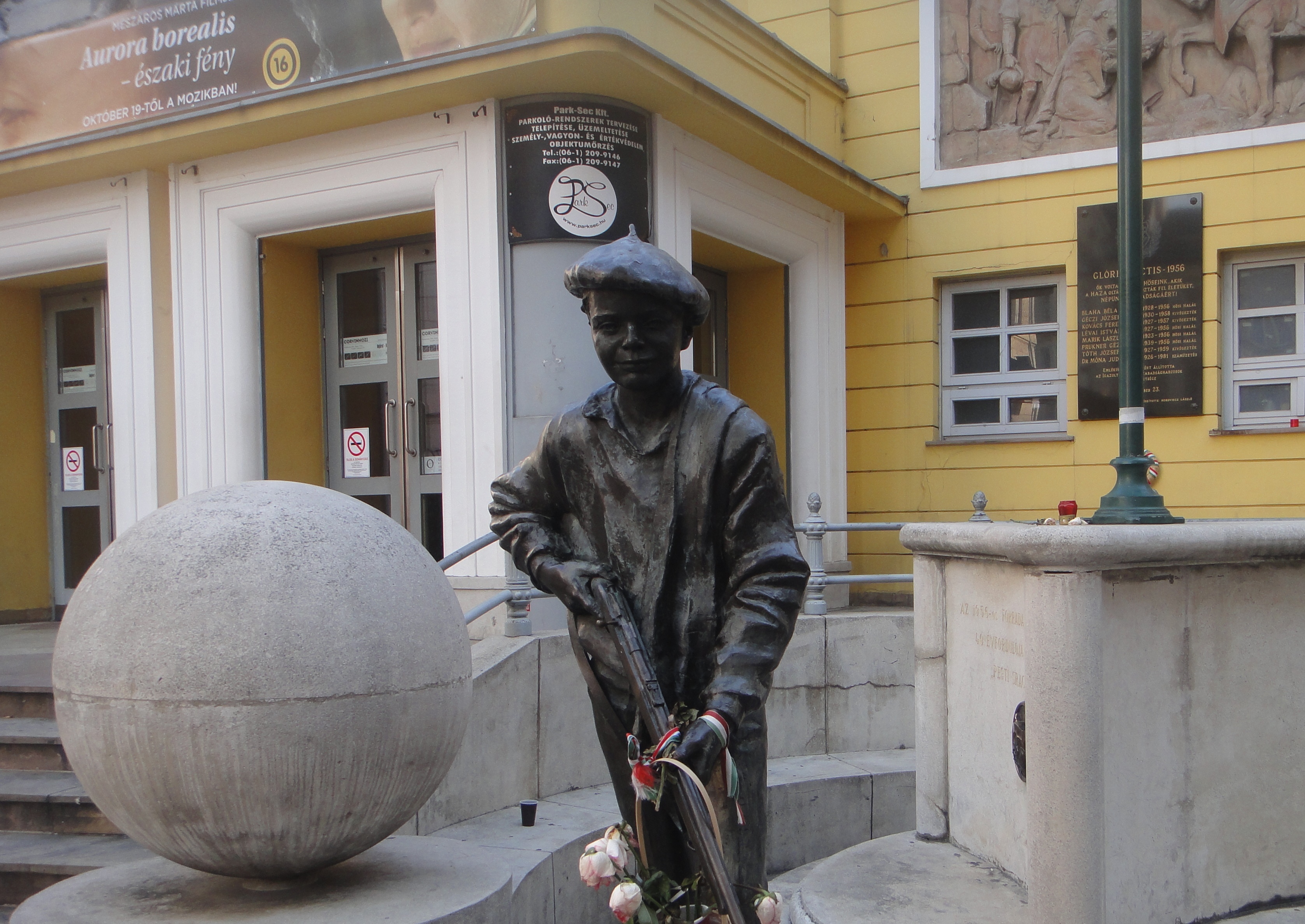Although it only lasted for 20 days, the revolt that started out as a peaceful student demonstration soon turned into one of the most important events in the 20th-century history of Hungary and Eastern Europe.
More than 2,500 freedom fighters and civilians died, over 20,000 were wounded and around 200,000 fled the country as refugees. However, Hungary was the first country to poke a hole in the Iron Curtain, and this revolt was a first step towards the unification of Europe.

Brief overview of events
At the end of World War II, the Soviet army took Nazi-ruled Hungary out of the grip of the Germans, only to oppress the nation once again, controlling the country’s sole governing body, the Kremlin-backed Hungarian Working People’s Party. The government eagerly followed Stalin’s ideologies and pushed the country into a severe economic situation. In the power struggles after Stalin’s death, nations of the Eastern bloc became disillusioned with Soviet-style Communism.
On 23 October 1956, young students started peaceful protests in Budapest, summarising their demands in 16 points. One group were joined by civilians to assail the Hungarian Radio building on Bródy Sándor utca insisting on broadcasting these demands, while another gathered outside Parliament demanding a speech from former Prime Minister Imre Nagy – the only politician in power they could trust.
Armed members of the dreaded State Security Office (ÁVH) – whose headquarters were in the building that is now the House of Terror Museum – quickly arrived at the radio building. A shot from one of the windows sparked a spontaneous battle until the demonstrators managed to take control of the radio.

As events further unfolded, Stalin’s massive statue standing by the City Park was taken down, and its head was dragged all the way to Blaha Lujza tér. Hungarians cut out the Soviet insignia from the centre of the national flag and the revolution was underway, causing brutal and bloody fighting between revolutionaries and overwhelming Soviet powers in the days to follow.
Budapest residents formed strategic blockades by the Danube, at Keleti station and within Corvin Passage, which would become the fiercest stronghold of the Revolution. On 28 October, Imre Nagy once again rose to power, announcing that a new government would be formed that would address the activists’ ultimatums, and introduced several positive changes. Despite his desperate attempts to draw the attention of the West to Hungary’s plight, a major military force stormed the border on 4 November and the revolution was brought to a halt.
Budapest still bears the bullet holes and scars of the conflict, but three statues proudly stand to commemorate heroes of the Revolution.
Pesti srác at Corvin Quarter
In the heart of Budapest’s Corvin Quarter, just outside the cinema, stands a shocking little statue of a young boy around 8-9 years of age with a rifle in his hands. This little figure commemorates the Pest Boys (Pesti srácok), young people – often adolescents – who were not afraid to take up arms to fight for their freedom and beliefs.
They were among the mere 1,000 people who stood strong even against Soviet tanks. Although they were absolutely no match for the heavy-handed Soviet forces, these youngsters fought fearlessly. Time magazine later named the Hungarian Freedom Fighter as the ‘Man of the Year’ in 1956. Many of the Pest Boys were either killed in combat or executed during subsequent reprisals.
1956 and all that
The majority of Pest Boys fought at Corvin Quarter, which became the fiercest bastion of the resistance. Here, the young Hungarian freedom fighters defeated the 33rd mechanised Soviet Guard and destroyed 17 Soviet tanks in a single day. A doctor from the time, József Pestessy, said: “Children wounded by Molotov cocktails were often brought to the aid station operating in the basement of the Kilián barracks with burns on their palms. After getting treatment, the Pest Boys did not wait for complete recovery, but instead rejoined fighting on the streets often saying: We can throw with it already…”
The Pest Boys have a memorial in Washington DC, where two Hungarian refugees settled and became successful football players after 1956.
Imre Nagy
Until 2019, the statue of Imre Nagy anchored one corner of Vértanúk tere, as the hero of 1956 riveted his eyes on Parliament. The bridge he stood on symbolised the road from autocracy to democracy that he almost managed to traverse during the Revolution.
Ironically, the statue was also halfway between the seat of political power, Parliament, and Szabadság tér, the symbolic spot where Imre Nagy led revolutionaries in 1956, halfway to freedom.
In 2019, the statue was controversially moved from its location near Parliament to a quiet corner of Jászai Mari tér, in the shadow of Margaret Bridge. Unveiled with little ceremony, it now stands near a memorial to another unlikely hero of 1956, Anna Kéthly (see below).
Imre Nagy is one of the most fascinating and perhaps most controversial heroes of Hungarian history. A Communist politician with a democratic mindset, he led the Revolution of 1956 and fought for Hungary’s freedom as a martyr till the very end, staying forever faithful to his beliefs even in the shadow of the gallows.
When the revolutionaries chose him as their leader, Imre Nagy became Prime Minister of Hungary for the second time – he had been stripped of power by the Soviet-backed government just a year before. Now forming a government, he promised to bring about change and took several positive measures. He declared armistice just before Soviet-Hungarian troops would have attacked Corvin Quarter with great force, encouraged the departure of Soviet forces from Hungary, declared a multi-party system and demolished the dreaded State Security Office (ÁVH).
Despite the armistice, when Soviet forces re-entered Hungary on 1 November, Nagy declared Hungary’s independence and withdrawal from the Warsaw Pact, hoping for intervention from the UN. The revolution was then crushed by brute force.
Nagy and his closest allies were provided sanctuary in the Yugoslav Embassy. A few days later, they left the building on the written promise of free passage by new Communist leader János Kádár – and were immediately arrested. Imre Nagy was put through a show trial then executed by hanging on the charge of treason.
Anna Kéthly
Tucked away between Wesselényi utca and Klauzál utca, you find a small and serene green oasis, a square named after one of the greatest heroines of Hungarian history, Anna Kéthly. Kéthly was the top international diplomat for the freedom fighters during the Revolution of 1956, continually standing up for social justice against both her own government and the greater powers.
In 1917, Kéthly had joined the Hungarian Social Democratic Party and was elected to its Central Women’s Steering Committee. In 1922, she became the second female MP in Hungarian history. In the run-up to the Revolution, Anna Kéthly was removed from Parliament and held under house arrest for two years. In 1950, she was detained, put through a show trial, convicted of spying and treason, and sentenced to life in prison. After international indignation, she was released four years later, but remained marginalised in Hungary’s Soviet-controlled society.
When the Revolution broke out, she became the president of the Social Democrats. Imre Nagy sent her to Vienna’s Socialist International meeting on 1 November to deliver a report on the Hungarian situation, and the next day she was appointed as Hungary’s delegate to the UN General Assembly. She was sent to New York to appeal for the help against the Soviet forces, attempting to draw the attention and sympathy of the Western world to the Hungarian situation.
On 4 November, the revolution was crushed and Anna Kéthly found herself unable to return to Hungary. She spent the rest of her life in exile, mostly in London. Although Hungary’s post-1956 Kádár regime beseeched her to return, she refused to do so, “until there are no Russian troops stationed in Hungary and there is a multi-party system and free elections held”. Unfortunately, she never returned... Anna Kéthly has a bust in the square named after her, but a newer sculpture can also be also found in Olimpia Park.




